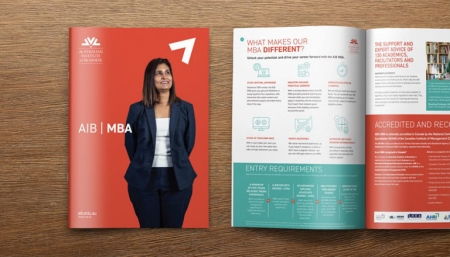Why brainstorming Is a crucial element in business?

“Capital isn’t that important in business. Experience isn’t that important. You can get both of these things. What is important, is ideas.” – Harvey Firestone
Brainstorming is defined as “the mulling over of ideas by one or more individuals in an attempt to devise or find a solution to a problem”. With just this definition, it’s easy to see that brainstorming, and brainstorming successfully, is vital to the success of a business.
Ideation, commonly known as idea generation, is something of a commodity in business. After so many years, with many different varieties of new technologies, how does a new business come into the industry and make an impact? Or in the same vein, how does an established business continue to grow and develop to suit their customer base? Brainstorming is a key component of successful idea generation in business.
There are a multitude of uses for brainstorming. Most people associate brainstorming with new product ideas or marketing campaigns – but brainstorming can also be used for tasks including internal procedures, company structure and written articles. It all depends on the type of business and the approach that business takes to collaborations. There are, of course, many other ways that these types of issues could be resolved – so why bother with brainstorming? Here are three key reasons:
Collecting viewpoints
The best way to find out how people feel about a product line, a service offering, the way in which a company is structured or even internal processes is fairly obvious – ask them! As a manager, your viewpoint may be different to that of the people actioning a particular service or process. If you’re not involved in management, then be aware that managers aren’t able to understand everything involved in the day-to-day requirements. Brainstorming and collecting the viewpoints of others helps to create ideas and innovations that are widely respected within a business.
Encourages Thought
Similar to the above, inviting the wider stakeholders of a company into brainstorming encourages employees at all levels to think critically about current issues or future goals – and this is likely to feed into their future endeavours within a company.
Builds Team Relationships
Instead of one person feeling the pressure to come up with an amazing new idea, brainstorming allows employees to share the load of innovation, and encourages employees to work together respectfully and responsibly, to develop ideas and create viable solutions to problems. If these employees are from different departments within a business, this also encourages inter-office staff to share their views on a particular issue – increasing understanding across the business.
These are three main ways that brainstorming can benefit the continuing evolution of your business. But how do you then build an environment that encourages brainstorming?
There are no set rules or regulations for brainstorming sessions – that’s part of the beauty of it. But there are a few things you can do to create a culture of brainstorming and idea generation in your workplace.
- Avoid Judging Ideas Immediately – People are far more likely to share their ideas and visions in a comfortable and supportive space – arrange to include all ideas, record all ideas, and make the time to judge them on their merits at a later date. People need to feel able to share any ideas they may have – create an inclusive and non-judgemental space to accommodate.
- Encourage a Little ‘Crazy’ – In a similar vein to the point above, remember to encourage a few wild ideas from your staff and stakeholders. These so-called ‘crazy’ ideas can be adjusted later, if required – but remember that many of the world’s best inventions and creations came from a bizarre idea. Be open to exploring everything.
- Think of Ideas as Building Blocks – Nobody comes into a brainstorming session with the world’s most perfect, affordable, useful and marketable product or service in mind. Allow your brainstormers to build on each other’s ideas – often, another person’s idea is what sparks someone else’s creativity. Many ideas can be combined and integrated to great effect… allow the idea to develop organically wherever possible.
- Keep Focused on the Task at Hand – If you’re part of a growing business, with many exciting opportunities, then that is fantastic – but it can be very detrimental to successful brainstorming. If you’re holding a brainstorming meeting for a particular issue, perhaps around themes for a coming event, then ensure that your discussions stay focused on that, and don’t veer into unchartered territory like product ideas for the coming year. Keep confusion to a minimum.
- Create a Display – Visuals are a great addition to brainstorming meetings – arrange for a whiteboard, or colourful stationery supplies for those involved. This will help people to connect images to their ideas, and build on the ideas of others.
These are just a few ideas to help implement a well-organised brainstorming session – but it’s definitely not an exhaustive list. What experience do you have with brainstorming sessions and idea generation? Does your business support idea creation? What would you recommend as your ultimate brainstorming tip?
Brainstorm a few suggestions and tell us in the comments – we’d love to hear what you think!
This article was written by Simone Ball on behalf of the Australian Institute of Business. All opinions are that of the writer and do not necessarily reflect the opinion of AIB. The following sources have been used to prepare this article: Idea Champions, Merriam Webster, Brainstorming.co.uk, Houston Chronicle, Harvard Business Review, Entrepreneur and Bloomberg Businessweek.




